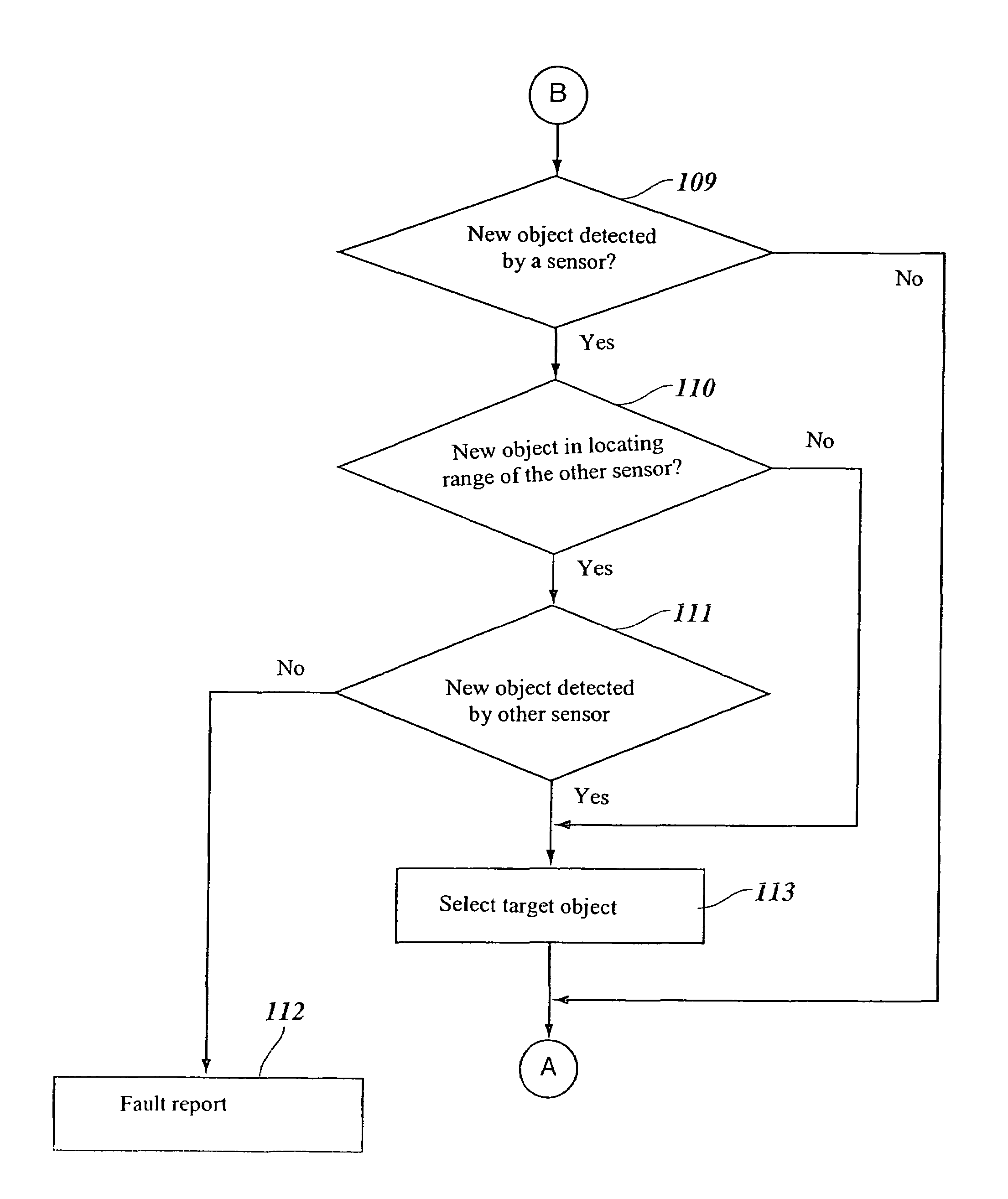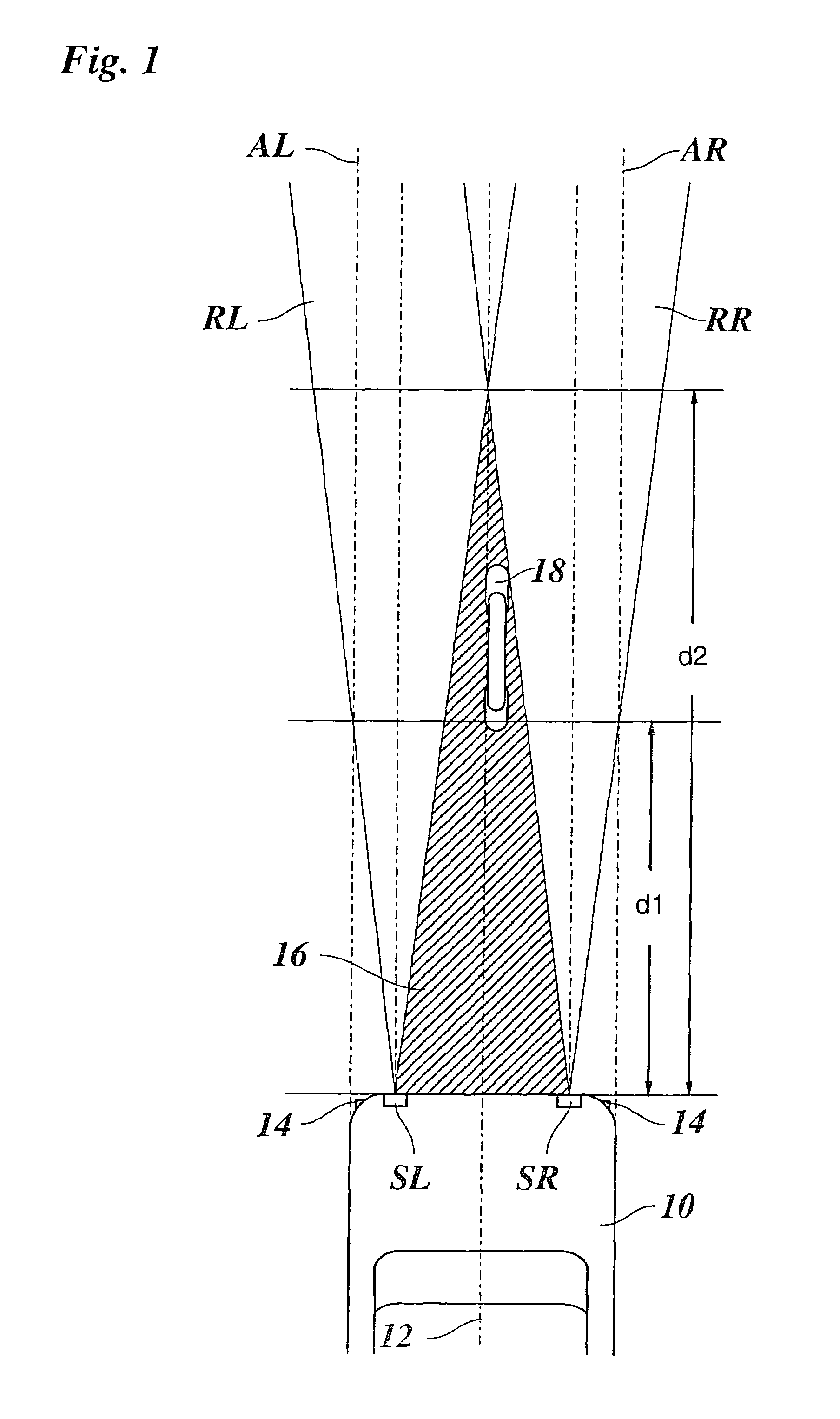Sensor arrangement and method for regulating the distance of motor vehicles
a technology of motor vehicles and sensors, applied in the field of sensor systems, can solve problems such as front of the center of the vehicle, and achieve the effects of reducing blind spots on both sides, reducing the reliability of the sensor system, and facilitating recognition
- Summary
- Abstract
- Description
- Claims
- Application Information
AI Technical Summary
Benefits of technology
Problems solved by technology
Method used
Image
Examples
Embodiment Construction
[0015]In FIG. 1 at the lower edge, the front end of a vehicle 10 is shown in which, in the region of the front bumper, a sensor system is provided made up of two sensors SR and SL arranged symmetrically with respect to longitudinal center axis 12 of the vehicle. For example, these sensors are angular-resolution FMCW radar sensors which are able to detect the distances and relative speeds of objects in a distance range between 3 m and approximately 200 m. The extreme short range below 3 m is covered by additional parking-assistance sensors 14. Each of the two sensors SR and SL has a locating angular range RR and RL, respectively, of ±7°. Optical axes AR and AL of the two sensors run parallel to longitudinal center axis 12 of the vehicle. The lateral displacement of sensors SR and SL with respect to longitudinal center axis 12 of vehicle 10 is approximately 60 cm. Given a typical vehicle width of 2 m, this means that the two locating angular ranges RR and RL together already cover the...
PUM
 Login to View More
Login to View More Abstract
Description
Claims
Application Information
 Login to View More
Login to View More - R&D
- Intellectual Property
- Life Sciences
- Materials
- Tech Scout
- Unparalleled Data Quality
- Higher Quality Content
- 60% Fewer Hallucinations
Browse by: Latest US Patents, China's latest patents, Technical Efficacy Thesaurus, Application Domain, Technology Topic, Popular Technical Reports.
© 2025 PatSnap. All rights reserved.Legal|Privacy policy|Modern Slavery Act Transparency Statement|Sitemap|About US| Contact US: help@patsnap.com



